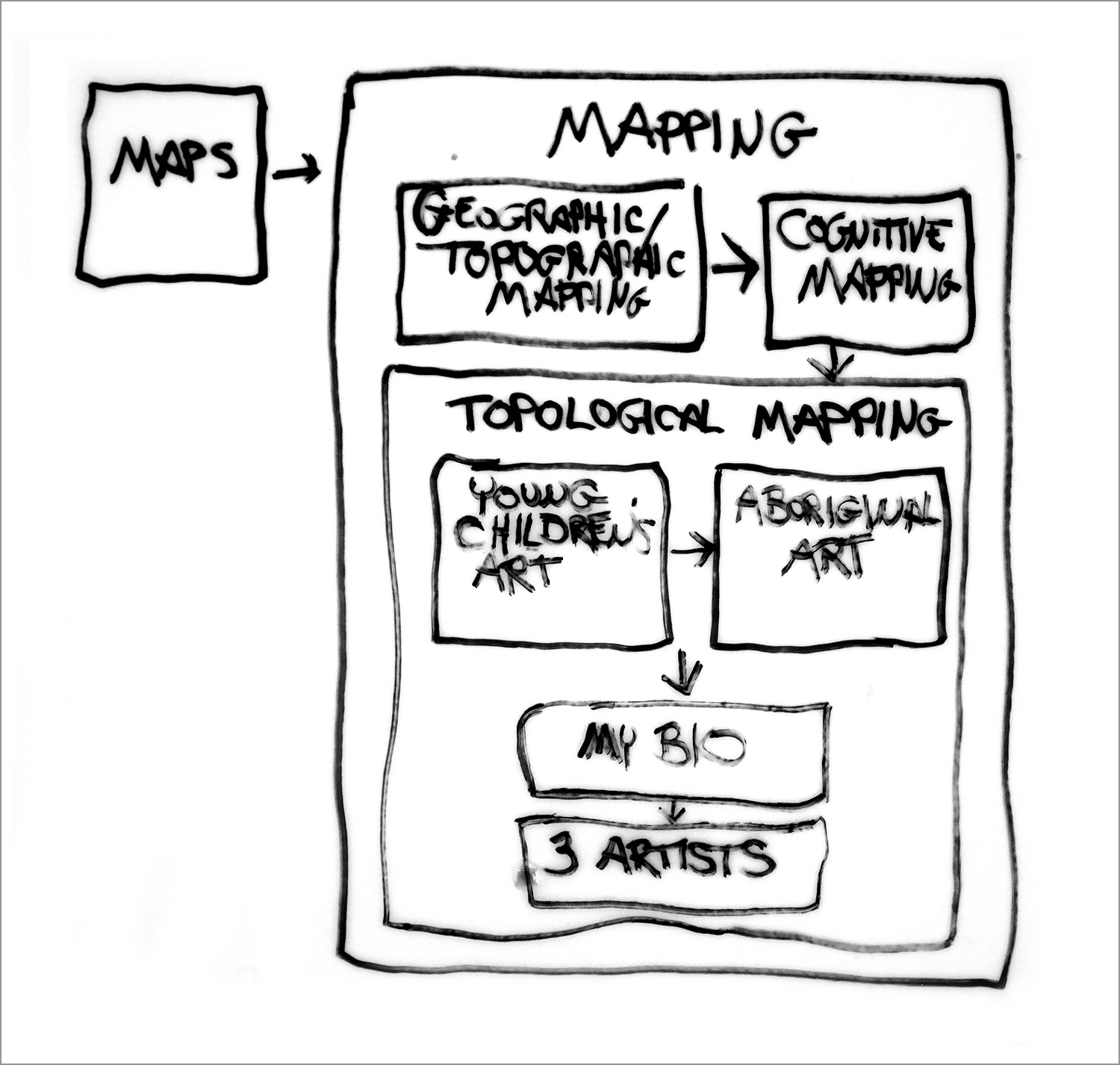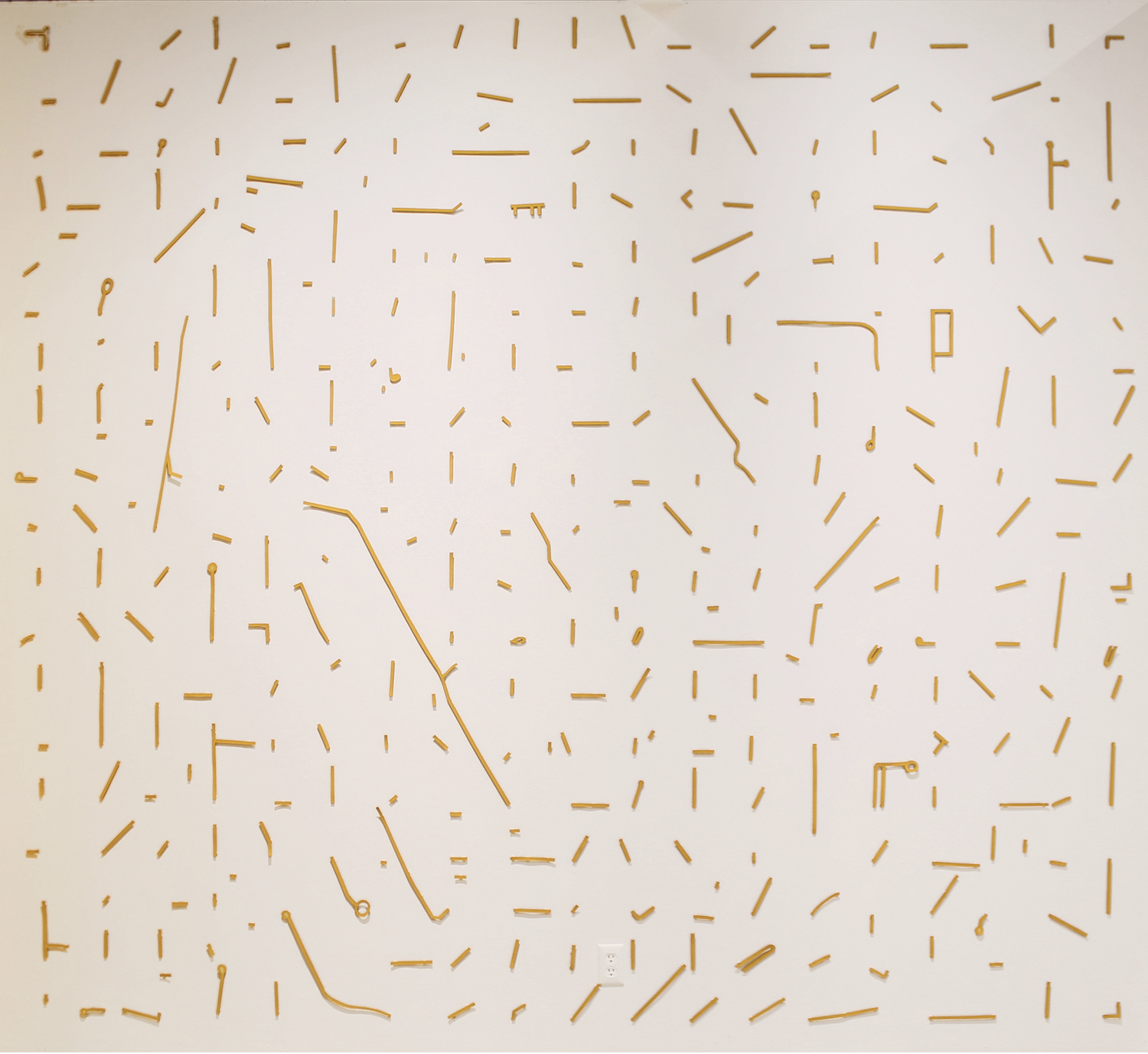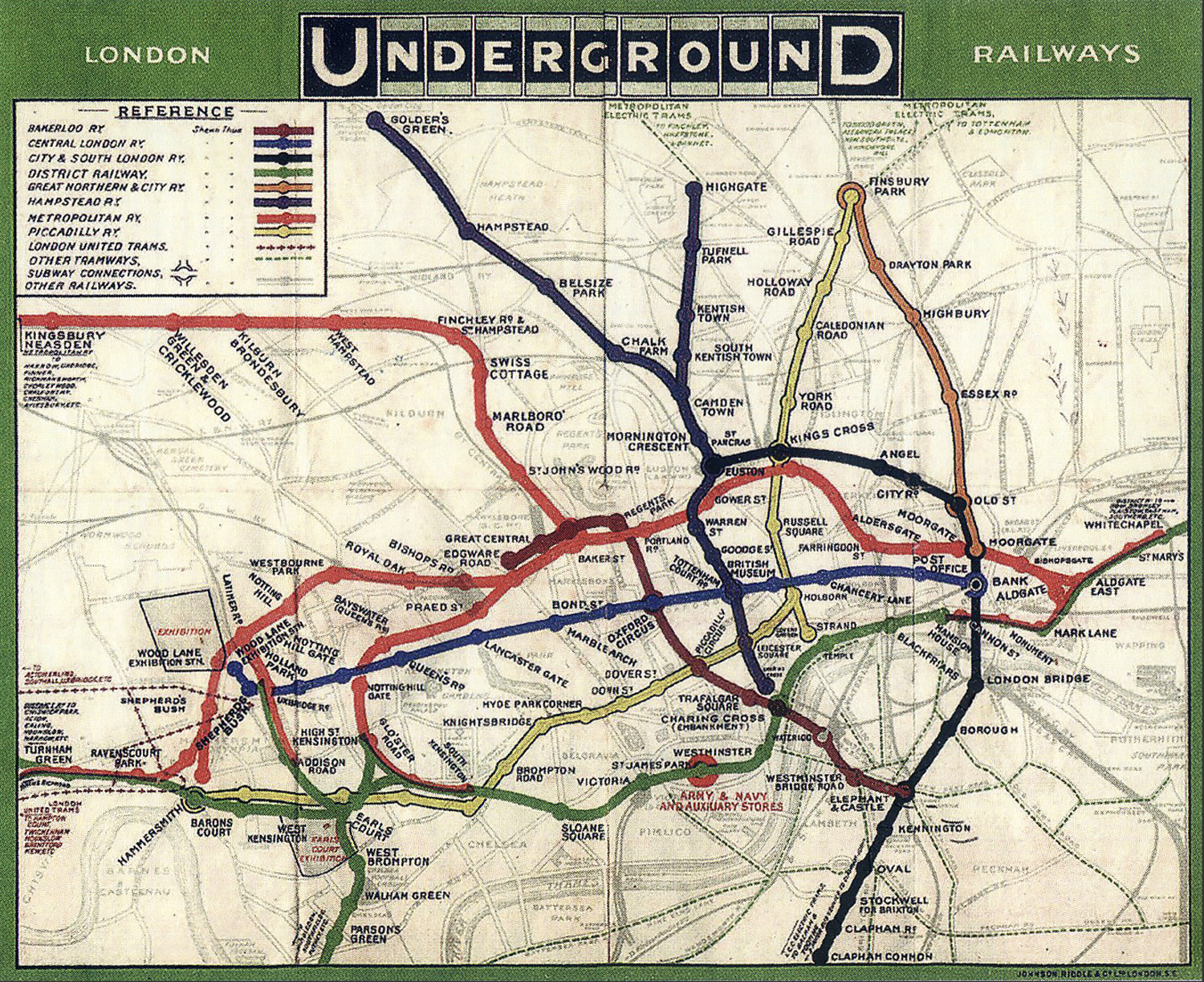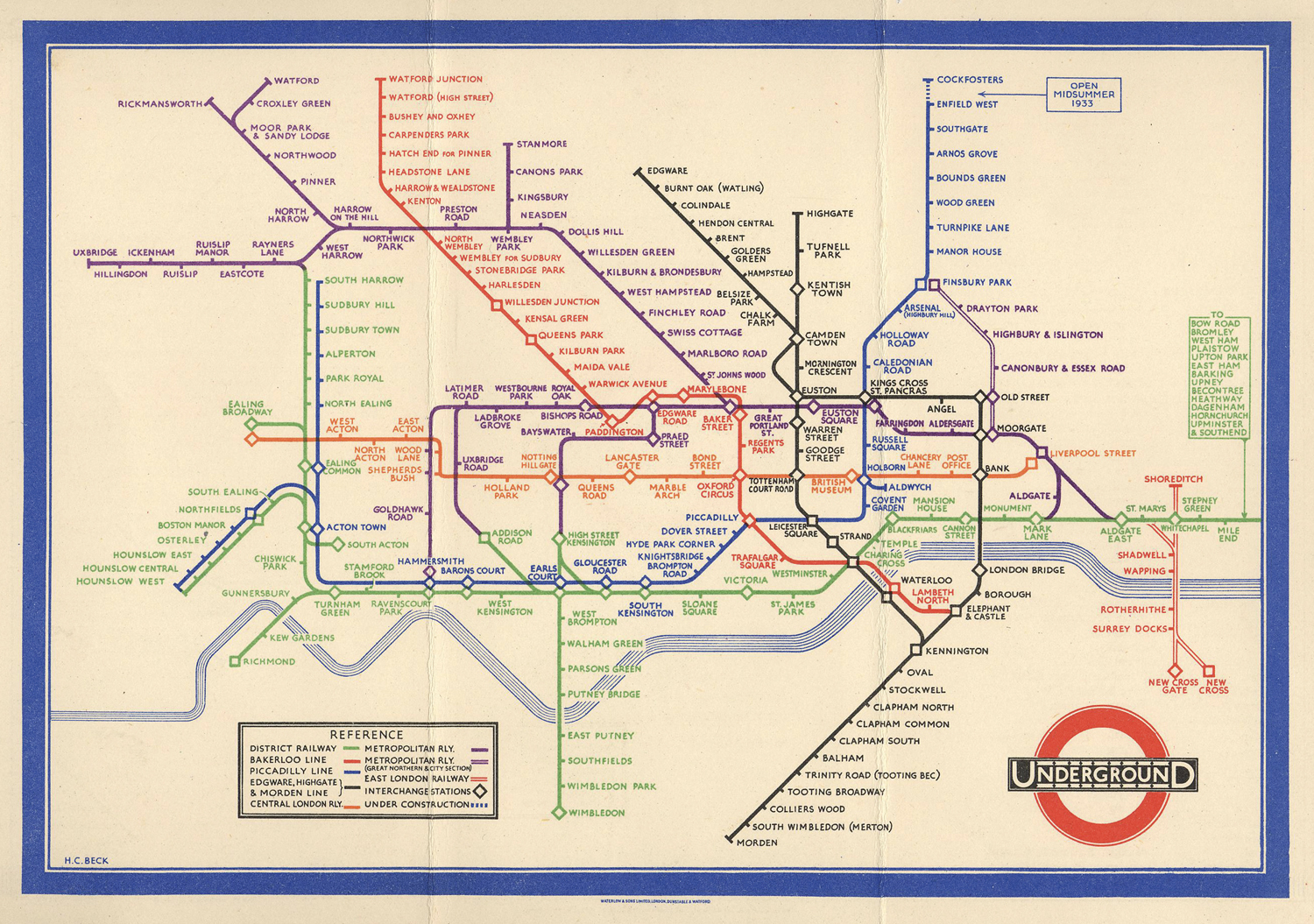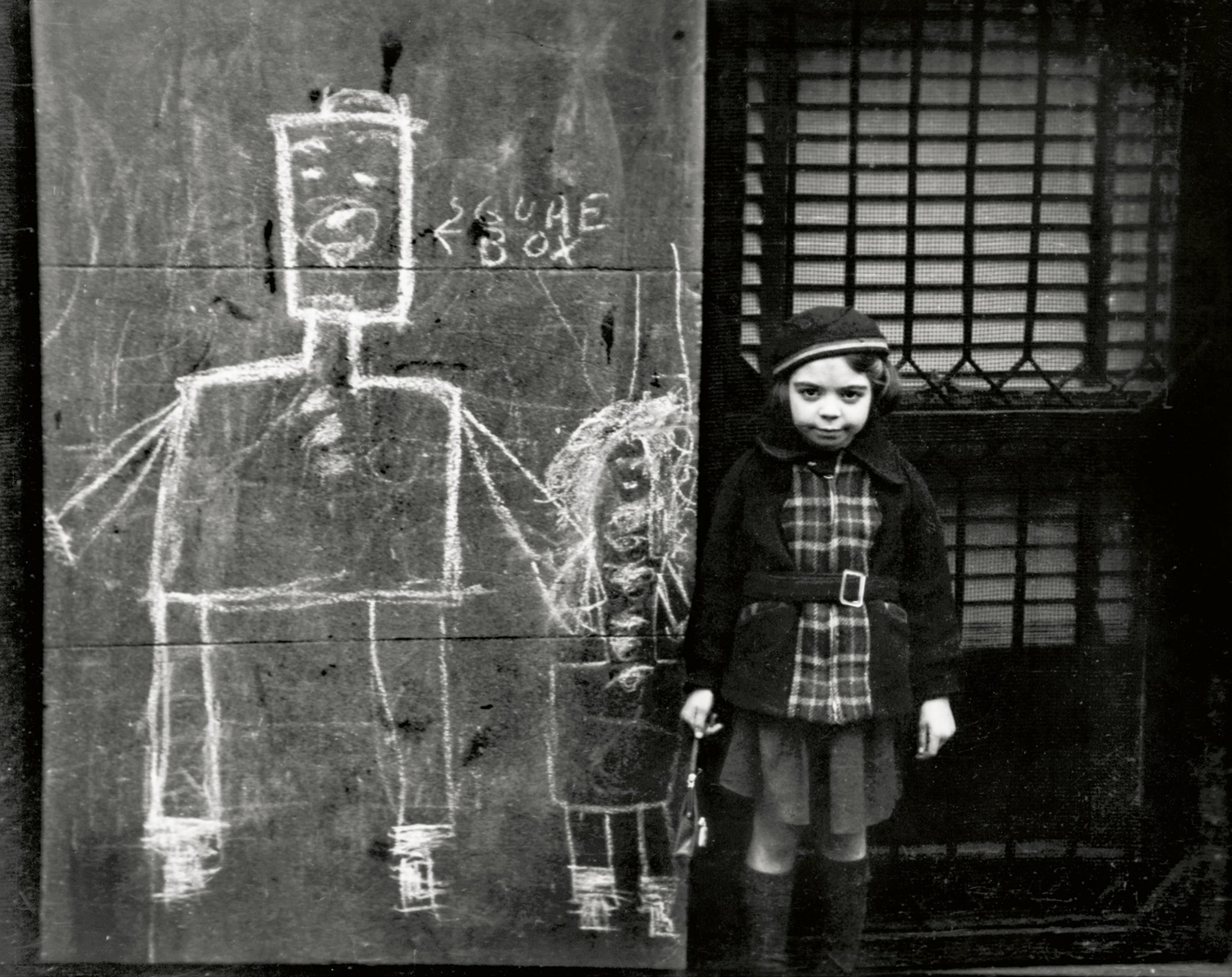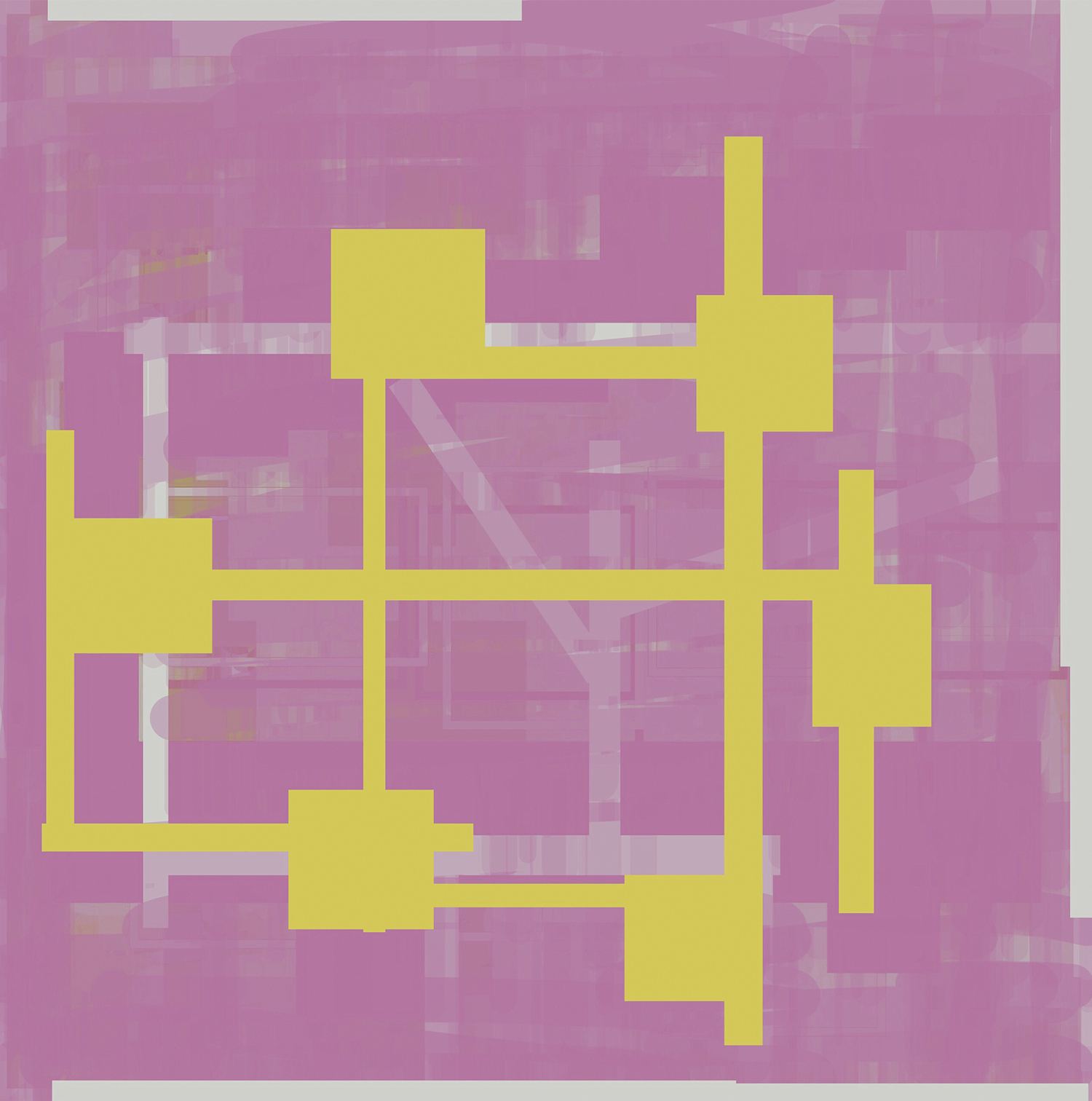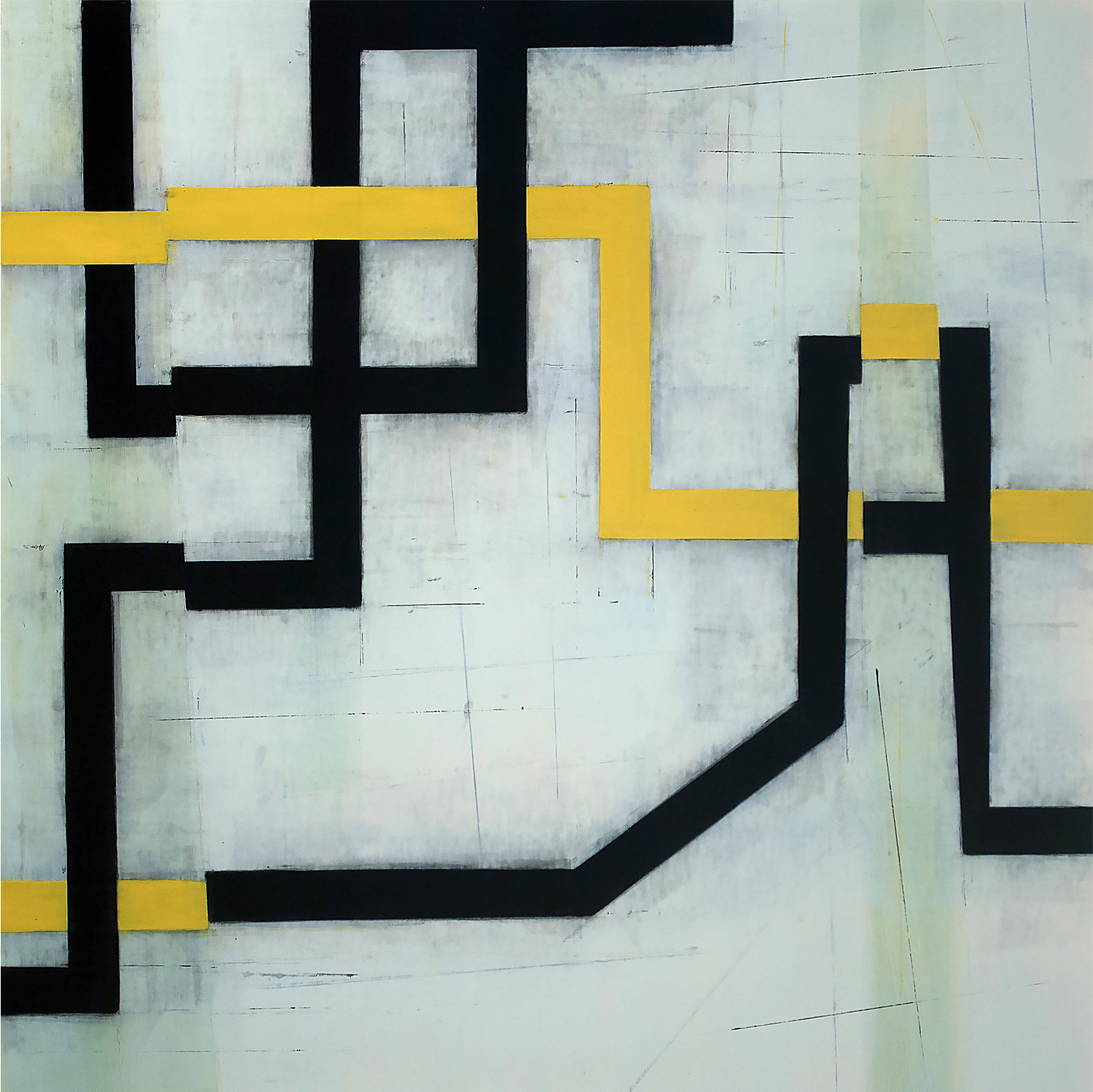“A bleached and fractured world surrounds the artist. To organize this mess of corrosion into patterns, grids, and subdivisions is an esthetic process that has scarcely been touched.” -Robert Smithson, 1968 (1.)
This is a vignette (2) about art and mapping with an emphasis on a particular kind of mapping—topological—and how it informs various artists’ practices, including my own. I have always been interested in how artists conceive and represent the infinitely complex world beyond their own skins. To this end, I will make the claim that topological mapping offers an especially apt mental schema to represent the profound discontinuity and fragmentation of contemporary spatial and temporal experience. So in the spirit of the diagrammatic, I start here with a rough sketch of a mind map, laying out what will be in this essay the key components and their interrelations (see Figure 1).
Figure 1
So let me begin by explaining what I mean by mapping in the broadest possible sense of the term. But first, it’s critical that I draw a key distinction between mapping and maps. For this inquiry I am mostly concerned with the former. Mapping (like most nouns ending in “ing”) designates a process, in this case, a mental operation, which I contrast with actual maps that are artifacts and produced mostly by cartographers.
So here, I am defining the mapping process in its most general sense as a graphic transfer of actual or imagined interrelationships of things onto bounded, flat surfaces such as paintings, drawings, screens, etc. (3) Things in this most generic description of mapping can be just about anything (people, trees, dogs, planets, numbers, data, feelings, etc.) presumed situated in just about any kind of space (outer space, psychological space, geographical space, data-space, and so on). Sometimes it is easy to discern the telltale signs of conventional maps in artworks, but more often this operation is less obvious—more allusive or coded. This under the hood, mental operation often passes unnoticed, as it is so readily eclipsed by the sensual materiality of the medium. As well, this relative hiddenness is due I believe to three additional factors: one, mapping is a process, not an object; two, it operates on a highly abstract register of thought and feeling; and three, it almost always addresses spaces of great complexity. Mapping is rarely enlisted to conceptualize the simple.
Map of Dead Ends
Buffalo artist, Kyle Butler, presents a fascinating example of an art practice centered around mapping. I had the opportunity to exhibit with him in an exhibition titled Points of Departure: Meditations on Mapping (curated by Karen Sardisco and Colleen Buzzard, Rochester Contemporary Art Center, 2017). As described in the accompanying catalog, Map of Dead Ends, Buffalo, NY 2017 (Figure 2) served as a catalyst for a series of drawings, paintings, installations, and animations. In the artist’s own words: “The map of dead ends is a prompt toward making; extracted, literal ends providing the visual structure for new work. In making the map, I found myself forming subjective criteria for what constituted an end (Is this too overgrown and derelict to still be a road? Is this more of a driveway than an end? Does this path count as an outlet?). Ultimately, the end had to be a place in its own right or a charismatic terminus to place.”
Figure 2: Kyle Butler | Dead Ends Map, Buffalo, NY | 12 3/4 x 9 3/4 inches | 2018 | Credit: courtesy of the artist
Figure 3: Kyle Butler | Reconfigured Ends (wall installation) | 12 3/4 x 9 3/4 inches | 2018 | Credit: courtesy of the artist
Cognitive Mapping
I’ve always been interested in the concept of cognitive mapping. I was first introduced to the concept years ago through a book by Kevin Lynch (The Image of the City, 1960) where he deployed the idea of cognitive mapping to understand how people orient (or fail to orient) themselves to their larger urban environment. He viewed cognitive mapping as an indispensable conceptual tool for the inhabitants of large cities to make “legible” an otherwise unfathomable, built environment so much more vast and complex than could be symbolically grasped through an individual’s limited perspectives and daily itineraries. Lynch and others [e.g. Lefrebvre, The Situationists, Jamison, and more recently, an emerging field of study and practice known as Psychogeography.] championed these “abstract representations of space” as critical to bridging an individual’s subjective experience of “lived space” to an otherwise incomprehensible modern megalopolis. Here he was conceptualizing what he often referred to as largely subconscious mental maps—again, not actual cartographic artifacts. So my claim here is that some artists, whether or not they are conscious of it, manifest highly nuanced cognitive mapping (and I will add “affective mapping”) in their work, and through this process, seek to orient themselves, if only conceptually or symbolically, to a much larger reality.
Having just compressed the contents of perhaps three essays into three paragraphs, let me focus now on a particular type of mapping—the topological.
Topological Mapping
It should go without saying that there are many different kinds of maps serving many different purposes. The distribution and interrelationships of almost anything on the earth (and beyond) has already or soon will be mapped by someone. When most people think of maps, they’re picturing some type of geographic or topographical map, perhaps spread across an impossible to refold sheet of paper or, more likely today, a dynamic display on a phone or computer screen. For my purposes, a key quality of these kinds of maps is that they represent and implicitly assume their regions to be a continuous space available for continuous movement over a continuous surface—the key term here obviously being continuum. Of course the only continuum on offer is the actual surface of the paper or the backlit screen; beyond that, a map is only a graphical projection of a hypothetical experience of spatial continuum.
A topological (not to be confused topographical) map, on the other hand, makes no claim to represent much less assume a continuum of spatial organization or experience. To put it frankly, it doesn’t care; it focuses exclusively on relative locations and relations of the mapped features. Its job is to preserve only the topological properties of connectedness and separation, extension, spatial order, relative proximity and relative distance, and enclosure with little regard for geographical details or actual distances and locations. The most common topological maps are circuit maps, network topologies, and route maps, perhaps the most famous of which was Harry Beck’s 1931 redesigned map of the London Underground. A quick comparison of Beck’s “solution” with the earlier, “geographic-based” map perfectly illustrates the difference between the two types of mapping (see Figures 4 and 5). An amusing way that some commentators distinguish topological maps is that one could subject them to major distortions as if they were printed on a flexible rubber substrate; they could be warped, twisted, and stretched, and yet those key topological features just mentioned would remain intact.
Figure 4: Underground Tube Map, 1908
Figure 5: Harry Beck, 1931
So what does topological mapping have to do with art? Let’s start by seeing how this kind of mental mapping unfolds in two very different domains of artmaking.
The Art of the Very Young
I am arguing that topological mapping underpins quite literally the very beginnings of human artmaking. Mighty big claim, I know, but let’s take a look at this child’s chalk drawing on a New York wall captured in the 1930s by one of my all-time favorite photographers, Helen Levitt (see Figure 6). Variations of this type of drawing have been produced by millions of very young children at a specific stage of their development. And who is not thoroughly charmed by these children’s naïve recordings of objects and figures in their world? And we certainly don’t need a formal analysis from a developmental psychologist to appreciate them even though that’s exactly what I am about to do (except that I am not a developmental psychologist). Clearly this drawing does not present the kinds of visual information of a scene we’d expect from an older, trained draftsperson. Critically what is NOT utilized in this drawing are any number of “depth cues” such as overlap, tonal modeling, projective geometry, occluding contours, and so on. Although not germane to this discussion, I want to point out what is often a strong performative component with drawings of young children; this “showing” would likely have been accompanied by a full-throated verbal exposition during or after the drawing in the presence of an interested adult—perhaps Helen Levitt in this instance.
Figure 6: Helen Levitt, 1938
Among its many endearing features, this drawing perfectly expresses a mental operation of topological mapping that governed the organization of the various body parts. It should go without saying that this young artist would not have been aware of this, as I suspect it was highly unlikely that she suddenly blurted out: “Hey, Helen: I think it’s about time for some topological mapping!” Even with more mature artists, these kinds of mental process operate largely below the threshold of conscious articulation. But the important takeaway is that, at this stage of this child’s development, topological mapping was thoroughly implicated in the way she conceived and arranged each of those graphical “stand-ins” for the body parts and facial features. Without yet having fully developed her fine motor coordination much less the acquisition of more conceptually sophisticated projective geometries and depth cues, she was limited to these rudimentary “picture primitives” (lines, circles, squares, etc.) to map those critical topological features of connectedness and separation, extension, spatial order, relative proximity and relative distance, and enclosure. Of course, we are talking about an image here, not a route map, and so that rubberized distortion test I mentioned would certainly affect the drawing’s overall intelligibility. Yet, even then, those critical topological relations of the scene would remain intact.
Aboriginal Art
Now I will turn my attention to a completely different convergence of art and topological mapping—the Aboriginal art of Australia. But first, a few disclaimers. One is that I make no claim to be a scholar of these geographically and historically varied cultural traditions, and thus I rely on the writings of a handful of real scholars to augment my own observations. Two: although this portion of the essay happens to follow one about the artwork of young children, in no way am I suggesting a structural link between children’s developmental stage of artmaking and some so-called “primitive” stage of human development. Quite the contrary: the art and artifacts of the aboriginal peoples are highly complex and conceptually sophisticated. Finally, I would be remiss to venture into this terrain without acknowledging the significant categorical difficulties confronting cultural outsiders like myself striving to grasp such a radically different cultural milieu. I am not alone in questioning whether I should refer to various artifacts as maps (geographic, topographic, or topological?) or images, or even as icons or as designs. And matters get even more complicated, as so many of these “designs” enfold both spatial and temporal references, not to mention what is often a strong performative/ceremonial component. But for my purposes, it’s this very scrambling and intermixing of graphic categories that fascinates me the most and points to the very heart of so many art practices of the Expanded Diagram more generally. So back topological mapping.
Although a much deeper investigation into Australian Aboriginal art is on deck for a future post, I will briefly point to a schematic drawing and a couple of paintings that I feel manifest topological mapping operations. (See Figure 7) A significant number of Aboriginal artworks—both those preserved from older “classical” Aboriginal culture and those produced by more contemporary artists—can be fairly characterized as “terrestrial representations.” Many of these paintings address wayfinding and spatial orientation, either as a practical tool for the here and now or as a ritualistic engagement with ancestral meanderings (“songlines”) of the “dreamings.” In some instances they also aim to validate territorial ownership of the different clans which often explains the insertion of what are essentially totemic creatures.
Figure 7: David Lewis, Schematic Representation of Muranji Rock Hole Area (on left). Based on the painting by Big Peter Tjuburrula, ca. 1974; From Observations on Route Finding and Spatial Orientation among the Aboriginal Peoples of the Western Desert Region of Central Australia, Oceania 46
Certainly even a cursory view of these highly unique “terrestrial representations” reveals significant differences from modern cartographic displays where we would expect to see precisely scaled and proportional distances arranged according to exacting compass alignments. Where mapping is a significant facet of Aboriginal painting and design, it is often referred to by numerous scholars as topographical mapping. However, I suggest that what we see here would be better characterized as topological mapping. The distinction between the two is fully illustrated below, courtesy of David Lewis’ side-by-side comparison of what I am calling a topological schematic on the left and a topographical map on the right—both describing the same space.
The schematic drawing features what Lewis characterizes as a “site-path framework,” which in this instance links various sites associated with mythic episodes by way of mythological tracks. To my eye, a similar spatial framework underpins the structure of the two paintings as well. As topological mappings, this schematic drawing and the two paintings would never be confused with Beck’s tube map which was designed solely as a graphic display of pure information. On the other hand, these Aboriginal paintings DO share critical features of modern, topological route maps, specifically their concern with fundamental topological spatial relations (to repeat: connectedness & separation, extension, spatial order, relative proximity & relative distance, and enclosure).
Figure 8: Pinta Pinta Tjapanangka | Tingarri Dreaming at Yaru Yaru 1981 | National Gallery of Victoria, Melbourne
Figure 9: Fred Ward Tjungurrayi | Tingarri men at camp sites near Kiwirrkura 1987 | National Gallery of Victoria, Melbourne
My So-Called Topological Life
I will now attempt to “connect the dots” (which, by the way, is a topologically loaded phrase) of what I have covered so far and what I stated at the beginning about topographic mapping—that it affords an apt framework for representing contemporary spatial and temporal experience. Maybe it is just me, but for a long time I have been hyper attuned to a generalized sense of profound discontinuity and fragmentation in the networked, globalized world I find myself inhabiting. It seems that these qualities of contemporary life—at least in the cosmopolitan centers—has become so normalized as to be largely unnoticed. Obviously I notice it, and I suspect, in my case, this has a lot to do with my age and biography, especially my earlier years growing up on remote Indian reservations in Eastern Montana (See Figure 10). For starters, I am old enough to remember a world before it was recalibrated by modern digital technologies. This alone has ushered in a significantly changed reality requiring significantly adjusted cognitive mapping.
Figure 10: Fort Belknap, Montana | http://nativenews.jour.umt.edu/2013/?page_id=24
But first, a slight digression: I can also recall a time before I ever flew in an airplane, which took place sometime in my teens. I realize this is a rather trivial observation, but interestingly one that sets the table for another productive contrast of geographical and the topological mapping (much like the paired Aboriginal maps above). Until the moment of my first lift-off, at least this tiny aspect of my life was fully in accord with all pre-20th century humans who found themselves moving from one location to another. Before the option of air travel, any kind of movement by foot, beast, boat, train, or whatever was experienced as a continuous movement across a continuous terrestrial surface. Thus it seems reasonable to assume that the kinds of cognitive mapping discussed above would’ve leaned toward the topographical/geographical. But with the advent of airborne transportation, the traveler’s fundamental experience of mobility as a continuous process gives way to a point-to-point, topological relationship to space. For example, I recently took a red-eye flight from Seattle to Philadelphia, and I can attest to my total obliviousness of the hills and dales passing 30,000 feet below me. My interior mental mapping that underpinned my spatial relations to this great continent needed no continuous lines whatsoever—just two points (two airports) with five hours between them.
Point-to-point mapping also applies to movement below the earth’s surface, which is why modern subway maps are almost exclusively topological. When I’m not flying from the West coast, I occasionally ride the NY subways, and I can attest to a similar oblivion to the ever-changing theater of space passing over me. I just drop down into a station in Bushwick and pop back up on the Upper West Side with little or no sense of the East River I just passed under. To be clear, I’m not demonizing either flying or riding subways. Quite the opposite: the surface traffic in NY is horrible and I have no inclination to add another cross country drive to my bucket list. I am simply using these concrete examples of mobility to compare and contrast two kinds of mental mapping. Now to a slightly more abstract domain of topological experience.
Earlier I listed three common domains of topological mapping; one was the route map, which I feel effectively schematizes the modern mobilities I’ve just touched on. But another of these, the network mapping, attends to far more complex relations of part-to-whole, or more precisely for my purposes, of individuals to their increasingly dispersed social ecosystems. So, one last time, back to my personal biography.
As I mentioned earlier, there are many kinds of mappable spaces. Along with geographical space, my social space has also changed considerably since my early childhood. Certainly, this can be explained in part by my transition from small, isolated communities to much more populated and extended metropolitan regions. I would characterize this shift as one from a fairly circumscribed space of mostly co-present, face-to-face interactions to one where human exchanges are far more geographically distributed and virtual. In those pre-internet, small towns, almost everyone with whom I interacted were physically close by which is in stark contrast to the contemporary city/suburb/exurb nexus where I currently live. Certainly I continue to enjoy face-to-face, co-present relationships at home, at work, in the neighborhood, and so on. But driven by modern communication technologies and emerging dynamics of social sorting, my own and many others’ social interactions are increasingly taking place online to and from geographically far flung locations—decidedly not co-present and not face-to-face. I am hardly unusual in that a significant percentage of my social and professional associations are with people located far away and, in many cases, with whom I’ve never even met in person. Crucially these relationships—however superficial or deep they may be—populate my social space more than my actual neighbors and even with many of my co-workers.
Figure 11: Paul Baran, Distributed Network Diagram (rotated 90 degrees) 1964
Again, I am not suggesting that this mutating social geography is necessarily good or bad. Sidestepping those critical economic, political and technological forces that are driving these transformations of our social space, I am simply pondering how people in general (and artists in particular) situate themselves in their rapidly changing perceptual landscapes. How do artists cognitively map their part-to-whole relations with whatever constitutes their “community” and the world more broadly? How might contemporary art practices visualize this emerging disjunctive and dispersed life world? Of course, this opens up an investigation far too large in scope to attempt in this writing. But far more modestly, I want to conclude this writing by presenting some intriguing responses of three more artists whose work I feel obliquely manifests mental mapping in general and topological mapping in particular.
Cells and Conduits: Peter Halley
All of the artists I’m presenting in this vignette are not cartographers, and so these artworks can never be reduced to mere mapping. Nor are they (to my knowledge) sociologists and so I am not claiming that their art is directly addressing those larger questions I just laid out. I’m simply suggesting that some instances of mental mapping are operative in their practices.
The first is the paintings of Peter Halley (see Figure 12) in which the overt structural homologies to circuitry, cells, and conduits overwhelmingly suggests topological mapping as its core organizing principle (and I would even go so far as to say, as its very theme). Among other aspects of his paintings, I feel that Halley’s work exemplifies a key diagrammatic feature I discuss in my About Diagrams—namely, of transposing temporal processes onto a static, graphic surface.
Figure 12: Peter Halley Exhibition, Xippas Gallery, Paris, 2013 | https://www.xippas.com/exhibition/peter-halley/
Sharon Butler (6)
A second example is the work of Sharon Butler (no relation to Kyle Butler), a New York artist and influential blogger. In these two paintings her deployment of mental/topological mapping is certainly less overt than in Halley’s. To use a Deleuzian phrase, we are very much operating in a “zone of indeterminacy.” Typical of most artworks influenced by diagrammatic thinking—specifically mapping—we encounter no apparent one-to-one, indexical correspondences between specific marks and movements to any set of relationships extrinsic to the painting. Still I sense here a “genuine” (that is, structurally significant rather than mere decorative flourish) topological impulse. As a viewer of 09_2019.2019 (Figure 13), I am prompted to correlate an array of yellow squares, off-squares, and elongated rectangles arranged to suggest a similar topological “site-path framework” discussed earlier. Whereas this piece is organized according to an implicit grid, July13_2019.2019 (Figure 14) echoes a centralized network map. But as these are paintings freed from the burden of obvious representation, I, the viewer, am also free to respond to their inherent elasticity of form and structure—free to follow the broken, radiating, and meandering “lines” that seem to simultaneously connect and bypass the partial enclosures distributed across the bleached background. As with any compelling body of artwork, Butler’s offers so much more than what I’ve chosen to focus on here. But, to my eye, these two paintings, share with the other artworks and designs I’ve presented, telltale qualities of topological mental mapping.
Figure 13: Sharon Butler | July, 09_2019.2019 | Credit: courtesy of the artist
Figure 14: Sharon Butler | July13_2019.2019 | Credit: courtesy of the artist
Never the Same Space Twice
Finally, I will conclude with only a few words about my own brush with topological mapping played out in these two paintings (see Figures 14 and 15). Certainly one advantage with including my own work is that, unlike any of the others, I can speak with full authority about my intentions and motivations. A common thread connecting all facets of my art practice is my obsession with the challenges of spatial orientation and wayfinding in our rapidly re-engineered, networked ecosystem. I trust that my brief biographical sketch sufficiently explains this coming about. With the series, Never the Same Space Twice, I deploy an abstract (non-pictorial), geometric visual language to evoke what I describe as hybrid topological route maps and flow charts. These pieces map no specific or actual space, but rather they enact a virtual experience of negotiating indeterminate terrains marked by discontinuities, disruptions, and detours.
Figure 14: Never the Same Space Twice D13 | oil on Mylar | 24 x 24 inches | 2019
Figure 15: Never the Same Space Twice D14 | oil on Mylar | 24 x 24 inches | 2019
In Conclusion
Frankly, I have no conclusion. Like all of my writings in the Expanded Diagram project, this is meant as a conversation starter rather than as a definitive, closed statement on topological mapping and art practices. Here I have written in a manner that parallels diagrammatic thinking more broadly; I’ve tried to set the stage to facilitate a “correlation of dissimilar elements” (mapping, cognitive mapping, children’s art, Aboriginal art, my biography, and the works of other artists). I plan to revisit mapping—topological or otherwise—in future posts.
1. A Sedimentation of the Mind: Earth Projects (1968), in Robert Smithson: The Collected Writings, ed. Jack Flam (Berkeley: University of California, 1996)
2. In this larger Expanded Diagram project I use the term, vignette, to refer to relatively short writings that focus on specific aspects of how diagrammatic thinking manifests in art practices. I see them as a continuation of my initial “white papers” and as conversation starters, leading to future writings and blog postings on specific artists.
3. For the sake of brevity, I am limiting this discussion to predominantly 2D formats, but certainly mapping strategies are deployed by artists working in any type of 3D format such as installations, multimedia, etc.
4. Kyle Butler: Links
kylewilliambutler.com
instagram.com/@kyle_butler
5. I should point out that this type of map is related to the much larger branch of mathematics and geometry—topology—of which, to be honest, I’ve only a tenuous understanding. If I were asked to explain it at, let’s say, a party, I would immediately excuse myself to go to the bathroom and conveniently forget to return.
6. Sharon Butler: Links
sharonlbutler.com
instagram.com/@sharon_butler
twitter.com/shrnbtlr
twitter.com/twocoats
twocoatsofpaint.com
instagram.com/twocoatsofpaint
